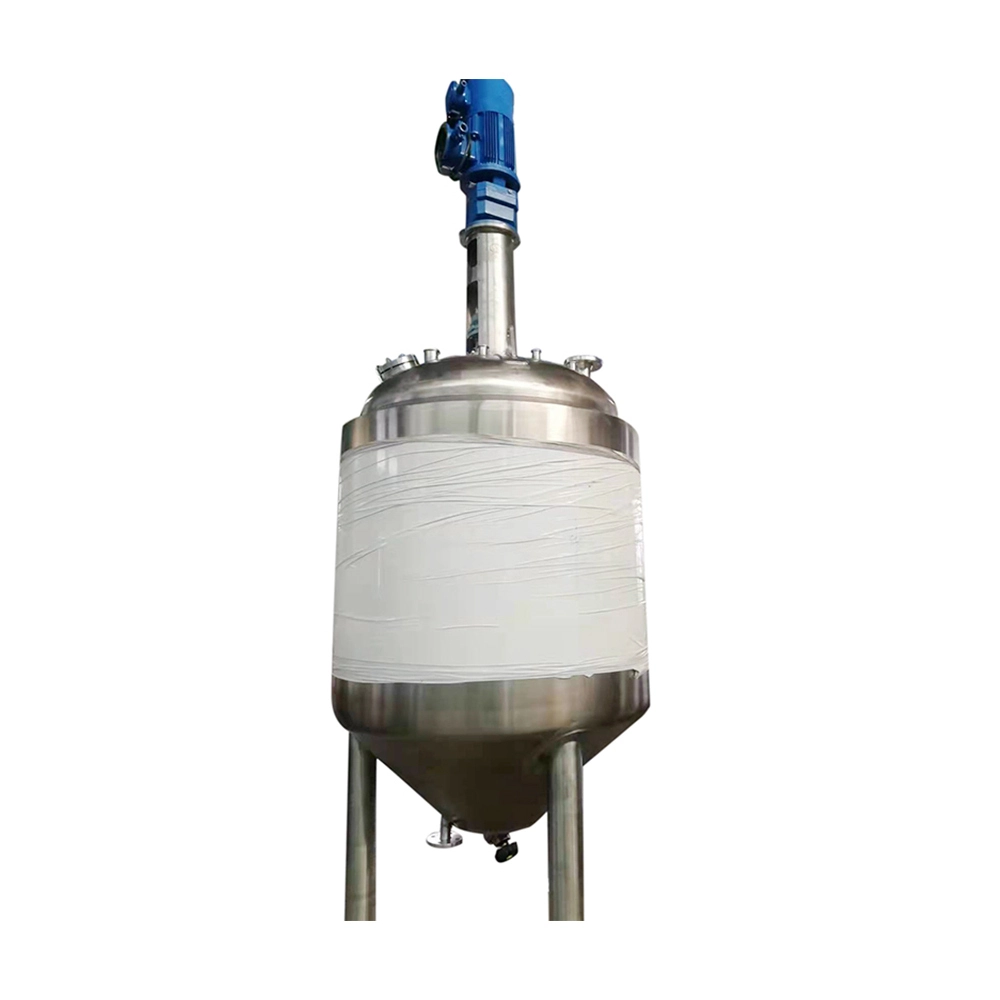316L/304L Stainless Steel Reactor
Stainless steel reaction kettles are widely used as pressure vessels in chemical processes such as reaction, evaporation, synthesis, polymerization, saponification, sulfonation, chlorination, and nitration in chemical, food, coating, hot melt adhesive, silicone, paint, pharmaceutical, and petrochemical production, such as reactors, reaction kettles, decomposition pots, polymerization kettles, etc.
Stainless steel reaction kettles have the characteristics of rapid heating, high temperature resistance, corrosion resistance, hygiene, no environmental pollution, no need for automatic heating by boilers, and convenient use. They are widely used in petroleum, chemical, rubber, pesticide, dye, medicine, food and other industries to complete processes such as vulcanization, nitration, hydrogenation, alkylation, polymerization, and condensation. Based on the full mixing of reacting substances as a prerequisite, stirring devices are required for physical change processes such as heating, cooling, liquid extraction, and gas absorption to achieve good results. We can also design and process external coil reaction kettles for customers.
Reaction pot composition
The reaction pot is mainly composed of four major parts: inner tank body, jacket, stirring device, and support seat (insulation structure can be adopted according to process needs).
1. The inner tank body is made of materials such as stainless steel (SUS304, SUS316L, or SUS321) according to process requirements. The inner surface is mirror-polished and can be cleaned online with CIP and sterilized with SIP, meeting hygiene specifications.
2. The jacket is made of stainless steel (SUS304) or carbon steel (Q235-B) according to process needs.
3. Appropriate diameter-to-height ratio design and customized stirring device as needed; the stirring shaft seal adopts a pressure-resistant and hygienic mechanical seal device to maintain the working pressure inside the tank and prevent unnecessary pollution and material loss caused by material leakage inside the tank.
4. The support type is suspended lug type or floor-mounted leg type according to operation requirements.
Specification drawing
The stainless steel reaction kettle is one of the commonly used reactionequipment in such industries as medicine and chemical industry. atcertain temperature and pressure, through agitator mixes two kinds ofvolumes certain (or many kinds of)liquids, solids or liquids, promotes itschemical reaction,usuallY with thermal heat effect, Inputs required heatenergy by heat exchanging device or shifts forming heat energy. Type ofagitation more uses anchor or frame type which ensures equal and evenmixture in short time.
Speed of agitation more matches frequency conversion with temperatureof display and control
Product parameters
|
Volume (L) |
Core Dia. (mm) |
Jacket Cover Dia (mm) |
Motor power |
Reducer model |
RPM |
|
30 |
400 |
500 |
0.6-1.1 |
M2 |
60-36 |
|
50 |
500 |
600 |
0.6-1.1 |
M3 |
60-36 |
|
100 |
550 |
650 |
1.1-1.5 |
M4 |
60-36 |
|
150 |
600 |
700 |
2.2 |
M6 |
60-36 |
|
200 |
650 |
750 |
2.2 |
M6 |
60-36 |
|
300 |
800 |
900 |
2.2 |
M6 |
60-36 |
|
500 |
900 |
1000 |
2.2 |
M6 |
60-36 |
|
800 |
1100 |
1200 |
4 |
M8 |
60-36 |
|
1000 |
1200 |
1300 |
4 |
M8 |
60-36 |
|
1500 |
1300 |
1400 |
4 |
M8 |
60-36 |
|
2000 |
1400 |
1500 |
4 |
M8 |
60-36 |
|
2500 |
1400 |
1500 |
7.5 |
BLB7.5-4-13 |
90 |
|
4000 |
1500 |
1600 |
7.5 |
BLB7.5-4-13 |
63 |
|
8000 |
2000 |
2100 |
15 |
BLB7.5-4-13 |
100 |
|
32000 |
3000 |
3200 |
37 |
BLB450-11-45 |
50-100 |
The reactor is divided into two series
product display






